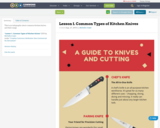
This is an infographic about common kitchen knives and their usage.
- Subject:
- Career and Technical Education
- Culinary Arts
- Material Type:
- Diagram/Illustration
- Date Added:
- 08/27/2019

This is an infographic about common kitchen knives and their usage.


Fractions and Decimals
Type of Unit: Concept
Prior Knowledge
Students should be able to:
Multiply and divide whole numbers and decimals.
Multiply a fraction by a whole number.
Multiply a fraction by another fraction.
Write fractions in equivalent forms, including converting between improper fractions and mixed numbers.
Understand the meaning and structure of decimal numbers.
Lesson Flow
This unit extends students’ learning from Grade 5 about operations with fractions and decimals.
The first lesson informally introduces the idea of dividing a fraction by a fraction. Students are challenged to figure out how many times a 14-cup measuring cup must be filled to measure the ingredients in a recipe. Students use a variety of methods, including adding 14 repeatedly until the sum is the desired amount, and drawing a model. In Lesson 2, students focus on dividing a fraction by a whole number. They make a model of the fraction—an area model, bar model, number line, or some other model—and then divide the model into whole numbers of groups. Students also work without a model by looking at the inverse relationship between division and multiplication. Students explore methods for dividing a whole number by a fraction in Lesson 3, for dividing a fraction by a unit fraction in Lesson 4, and for dividing a fraction by another fraction in Lesson 6. Students examine several methods and models for solving such problems, and use models to solve similar problems.
Students apply their learning to real-world contexts in Lesson 6 as they solve word problems that require dividing and multiplying mixed numbers. Lesson 7 is a Gallery lesson in which students choose from a number of problems that reinforce their learning from the previous lessons.
Students review the standard long-division algorithm for dividing whole numbers in Lesson 8. They discuss the different ways that an answer to a whole number division problem can be expressed (as a whole number plus a remainder, as a mixed number, or as a decimal). Students then solve a series of real-world problems that require the same whole number division operation, but have different answers because of how the remainder is interpreted.
Students focus on decimal operations in Lessons 9 and 10. In Lesson 9, they review addition, subtraction, multiplication, and division with decimals. They solve decimal problems using mental math, and then work on a card sort activity in which they must match problems with diagram and solution cards. In Lesson 10, students review the algorithms for the four basic decimal operations, and use estimation or other methods to place the decimal points in products and quotients. They solve multistep word problems involving decimal operations.
In Lesson 11, students explore whether multiplication always results in a greater number and whether division always results in a smaller number. They work on a Self Check problem in which they apply what they have learned to a real-world problem. Students consolidate their learning in Lesson 12 by critiquing and improving their work on the Self Check problem from the previous lesson. The unit ends with a second set of Gallery problems that students complete over two lessons.
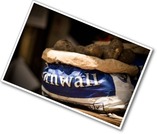
Gallery OverviewAllow students who have a clear understanding of the content in the unit to work on Gallery problems of their choosing. You can use this time to provide additional help to students who need review of the unit's concepts or to assist students who may have fallen behind on work.Gallery DescriptionStew RecipeStudents use fraction operations to help Molly figure out if she has enough potatoes to make stew for all the guests at her party.Multiply or Divide?Students match descriptions of situations to multiplication and division situations.Card SortStudents find the diagram, expression, and answer that match given word problems.Complex FractionsStudents learn about complex fractions and how they are useful for dividing fractions.

Ratios
Type of Unit: Concept
Prior Knowledge
Students should be able to:
Calculate with whole numbers up to 100 using all four operations.
Understand fraction notation and percents and translate among fractions, decimal numbers, and percents.
Interpret and use a number line.
Use tables to solve problems.
Use tape diagrams to solve problems.
Sketch and interpret graphs.
Write and interpret equations.
Lesson Flow
The first part of the unit begins with an exploration activity that focuses on a ratio as a way to compare the amount of egg and the amount of flour in a mixture. The context motivates a specific understanding of the use of, and need for, ratios as a way of making comparisons between quantities. Following this lesson, the usefulness of ratios in comparing quantities is developed in more detail, including a contrast to using subtraction to find differences. Students learn to interpret and express ratios as fractions, as decimal numbers, in a:b form, in words, and as data; they also learn to identify equivalent ratios.
The focus of the middle part of the unit is on the tools used to represent ratio relationships and on simplifying and comparing ratios. Students learn to use tape diagrams first, then double number lines, and finally ratio tables and graphs. As these tools are introduced, students use them in problem-solving contexts to solve ratio problems, including an investigation of glide ratios. Students are asked to make connections and distinctions among these forms of representation throughout these lessons. Students also choose a ratio project in this part of the unit (Lesson 8).
The third and last part of the unit covers understanding percents, including those greater than 100%.
Students have ample opportunities to check, deepen, and apply their understanding of ratios, including percents, with the selection of problems in the Gallery.
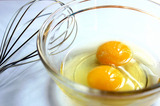
Students are asked to fix a botched mixture that does not follow a given recipe. To fix the mixture, students must find a ratio of eggs to flour that is equivalent to 2:3, but without explicit instruction on the concept of equivalent ratios.Key ConceptsStudents are invited to investigate the underlying idea of equivalent ratios by “correcting” the ratio between two ingredients in a botched mixture that does not follow a given recipe.Goals and Learning ObjectivesExplore a problem based on a recipe with two ingredients.Share approaches, clarify reasoning, and develop clear explanations of how to know a mixture has the right balance of ingredients.
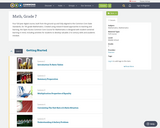
Four full-year digital course, built from the ground up and fully-aligned to the Common Core State Standards, for 7th grade Mathematics. Created using research-based approaches to teaching and learning, the Open Access Common Core Course for Mathematics is designed with student-centered learning in mind, including activities for students to develop valuable 21st century skills and academic mindset.

Getting Started
Type of Unit: Introduction
Prior Knowledge
Students should be able to:
Understand ratio concepts and use ratios.
Use ratio and rate reasoning to solve real-world problems.
Identify and use the multiplication property of equality.
Lesson Flow
This unit introduces students to the routines that build a successful classroom math community, and it introduces the basic features of the digital course that students will use throughout the year.
An introductory card sort activity matches students with their partner for the week. Then over the course of the week, students learn about the routines of Opening, Work Time, Ways of Thinking, Apply the Learning (some lessons), Summary of the Math, Reflection, and Exercises. Students learn how to present their work to the class, the importance of students’ taking responsibility for their own learning, and how to effectively participate in the classroom math community.
Students then work on Gallery problems, to further explore the resources and tools and to learn how to organize their work.
The mathematical work of the unit focuses on ratios and rates, including card sort activities in which students identify equivalent ratios and match different representations of an equivalent ratio. Students use the multiplication property of equality to justify solutions to real-world ratio problems.
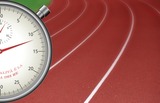
Discuss the important ways that listeners contribute to mathematical discussions during Ways of Thinking presentations. Then use ratio and rate reasoning to solve a problem about ingredients in a stew.Key ConceptsStudents find the unit rate of a ratio situation.Goals and Learning ObjectivesContribute as listeners during the Ways of Thinking discussion.Understand the concept of a unit rate that is associated with a ratio.Use rate reasoning to solve real-world problems.
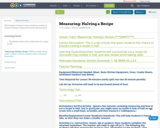
This template is meant to be an activity for students to practice halving a recipe and to review lab procedures.

For this lesson you will be sharing the Soups and Sauces Powerpoint with the students while they take notes using the gudied notes page provdied. After the information has been presented, students will be able to participate in making a mother sauce of their own. They will have the option of creating a homemade mac n' cheese using a bechamel sauce base or a homemamde spaghetti sauce using a tomato sauce base. This Lesson Aligns with Utah State Standards for Foods 2: Strand 7: Standards 1-3 Performance Objective 7

Short Description:
This book is intended to give students a basic understanding of nutritional information and labelling in the baking industry. In particular, there is a focus on Canadian regulations regarding labelling and merchandising of baked goods, as well as baking for customers with special diets, allergies, and intolerances.Nutrition and Labelling for the Canadian Baker is one of a series of Culinary Arts books developed to support the training of students and apprentices in British Columbia’s food service and hospitality industry. Although created with the Professional Cook and Baker programs in mind, these have been designed as a modular series, and therefore can be used to support a wide variety of programs that offer training in food service skills.
Long Description:
This book is intended to give students a basic understanding of nutritional information and labelling in the baking industry. In particular, there is a focus on Canadian regulations regarding labelling and merchandising of baked goods, as well as baking for customers with special diets, allergies, and intolerances.
Nutrition and Labelling for the Canadian Baker is one of a series of Culinary Arts books developed to support the training of students and apprentices in British Columbia’s food service and hospitality industry. Although created with the Professional Cook and Baker programs in mind, these have been designed as a modular series, and therefore can be used to support a wide variety of programs that offer training in food service skills.
Other books in the series include: Basic Kitchen and Food Service Management Food Safety, Sanitation, and Personal Hygiene Human Resources in the Food Service and Hospitality Industry Meat Cutting and Processing for Food Service Modern Pastry and Plated Desserts Understanding Ingredients for the Canadian Baker Working in the Food Service Industry Workplace Safety in the Food Service Industry
The series has been developed collaboratively with participation from public and private postsecondary institutions.
Word Count: 16628
ISBN: 978-1-998755-34-9
(Note: This resource's metadata has been created automatically by reformatting and/or combining the information that the author initially provided as part of a bulk import process.)

Students work in engineering teams to optimize cleaner energy solutions for cooking and heating in rural China. They choose between various options for heating, cooking, hot water, and lights and other electricity, balancing between the cost and health effects of different energy choices.

In this course students will visit the past through cookbooks to learn about what foodstuffs and technologies were available and when, and how religious and nutritional concerns dictated what was eaten and how it was cooked. Students will also learn about the gender dynamics of culinary writing and performances and the roles people played in writing and cooking recipes.

Students learn about five types of renewable energy that are part of engineering solutions to help people in rural communities use less and cleaner energy for cooking and heating. Specifically, students learn about the pollution and health challenges facing families in rural China, and they are introduced to the concept of optimization. Through an energy game, students differentiate between renewable and non-renewable sources of energy.
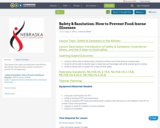
This lesson is for safety and sanitation in the kitchen. Specifically what food-borne illness is and how to prevent it from happening.

The participants in this seminar will dive into learning basic conversational Italian, Italian culture, and the Mediterranean diet. Each class is based on the preparation of a delicious dish and on the bite-sized acquisition of parts of the Italian language and culture. A good diet is not based on recipes only, it is also rooted in healthy habits and in culture. At the end of the seminar the participants will be able to cook some healthy and tasty recipes and to understand and speak basic Italian.
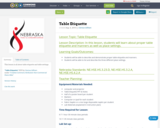
This lesson is all about table etiquette and table settings.
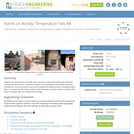
Students are introduced to the health risks caused by cooking and heating with inefficient cook stoves inside homes, a common practice in rural developing communities. Students simulate the cook stove scenario and use the engineering design process, including iterative trials, to increase warmth inside a building while reducing air quality problems. Students then collect and graph data, and analyze their findings.
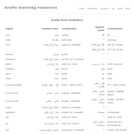
This list presents a basic set of vocabulary words that deal with categories of food and prepared dishes, including verbs and nouns that deal with cooking, ordering, takeout, ingredients, spices, fruits and vegetables. The majority of words contained within the website are nouns, and some verbs are interspersed. The words and verbs are presented in both Modern Standard Arabic and Egyptian colloquial Arabic. All of the words feature Arabic script and transliteration.